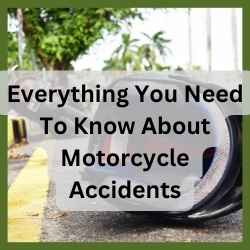
When it comes to hitting the open road on two wheels, understanding Washington motorcycle laws isn’t just a good idea—it’s absolutely essential. Whether you’re a seasoned enthusiast or new to motorcycle riding in Bellevue or anywhere across Washington, keeping up with these regulations could be the difference between a safe, legal ride and a costly mistake. At R Martin Law Group, led by the esteemed Rich Martin—one of America’s National Top One Percent personal injury attorneys—we’re committed to guiding riders through Washington’s unique motorcycle legal landscape.
Below, you’ll find a comprehensive, easy-to-follow breakdown of the most important motorcycle laws in Washington, alongside expert insights tailored just for you. Plus, we’ll answer pressing questions like what are the motorcycle helmet laws in Washington state, address lane usage and insurance requirements, and reveal how upcoming changes could impact your ride in 2025. Buckle up (or rather, strap on your helmet), and let’s rev up your knowledge!
The 15 Must-Know Washington Motorcycle Laws
Knowing the Washington motorcycle laws inside and out isn’t simply about compliance—it’s vital for your safety and legal protection. Here’s what you need to remember:
1. Mandatory Helmet Use
Let’s tackle one of the most crucial questions: What are the motorcycle helmet laws in Washington state? All motorcyclists and their passengers—no exceptions—must wear a helmet certified by the U.S. Department of Transportation. Your helmet must meet the Federal Motor Vehicle Safety Standard 218. That means no novelty lids or fashion statements that won’t protect you in an impact and could land you a hefty ticket.
Tip: Always check for the DOT label inside your helmet. Don’t risk your life—or your wallet.
2. Eye Protection Requirements
Washington state insists you protect your eyes unless your motorcycle has a windshield. Goggles, shatterproof glasses, or a full-face shield are all fair game. Skipping proper eye gear can be as dangerous as riding blindfolded, especially with our infamous Pacific Northwest rain and road debris.
3. Proper Licensing—No Excuses
Driving a motorcycle here is a privilege, not a right. Every rider must secure either a motorcycle endorsement on their Washington State driver’s license or hold a dedicated motorcycle license. Getting caught without one is a fast track to fines, impoundment, and a possible suspension.
4. Motorcycle Registration Rules
It doesn’t matter if you’re riding a touring bike or a vintage cafe racer—your motorcycle must be registered with the Washington State Department of Licensing, and that plate must be mounted and clearly visible. Skipping this step may seem harmless but could leave your pride and joy impounded.
5. Headlight: Always On, Always Ready
State law mandates motorcycle headlights be switched on and visible from at least 300 feet at all times—even during daylight. This “Lights On for Safety” rule is proven to reduce collisions by making you more visible to other drivers.
6. Understanding Legal Motorcycle Lane Usage in Washington
You may be wondering: How does Washington state define legal motorcycle lane usage? Motorcycles are entitled to full use of their traffic lane. That means cars, trucks, and buses must respect your space—no squeezing, sharing, or pushing you out of your lane. However, no more than two motorcycles can ride side by side in a single lane.
7. Lane Splitting: Not in the Evergreen State
It’s one of the hottest topics—in more ways than one! You might ask: Why is lane splitting illegal for motorcycles in Washington state? Lane splitting, or riding between rows of stopped or slow-moving traffic, is explicitly illegal here. The reasoning? Lawmakers and the Washington State Patrol argue it’s simply too risky for accident prevention, thanks to unpredictable driver behavior, narrow lanes, and our unpredictable weather. Violating this law puts you at risk for costly tickets—or far worse, a life-altering accident.
8. Handlebar Height Limits
Want ape hangers that reach the clouds? You’re out of luck—Washington limits handlebar height to 30 inches above the seat or, for some bikes, the rider’s shoulders (whichever is lower according to local interpretation). Tall bars might look cool, but excessive height reduces control and is a ticket magnet.
9. Noise Control: Don’t Let Your Pipes Write the Ticket
Washington requires all motorcycles to have operational mufflers. Modifications that amplify engine sound above legal decibel thresholds are prohibited. The state takes noise complaints seriously, especially in residential neighborhoods, so keep your ride’s roar within reason.
10. How to Legally Carry a Passenger on a Motorcycle in Washington
Bringing along a riding buddy is fun, but the state puts safety first. How to legally carry a passenger on a motorcycle in Washington? Riders can bring a passenger only if the motorcycle is equipped with a proper passenger seat and footrests. Passengers must be at least five years old and able to reach the foot pegs securely. No balancing acts or stacked friends allowed!
11. Required Equipment Checklist
Every bike on Washington roads must sport functional mirrors (one on each side), a horn audible from at least 200 feet, and fully operational head, tail, and brake lights. Skipping any of these is a violation and could hamper your visibility—or ability to signal for help in a pinch.
12. What Insurance Coverage Is Required for Motorcycle Riders in Washington State?
Protection doesn’t end with a helmet. What insurance coverage is required for motorcycle riders in Washington state? Here’s the minimum:
- $25,000 for bodily injury per person
- $50,000 for bodily injury per crash (multiple people)
- $10,000 for property damage per crash
Operating a motorcycle without adequate insurance is not just illegal—it could leave you personally on the hook for catastrophic financial damages if a crash occurs. Make sure your policy is up to date and covers medical, property, and third-party liability.
13. Modified Shoulder Riding: Eyes on the 2025 Law
Get ready for a change coming in 2025! A proposed law will allow motorcycles to use the right shoulder of some limited-access highways—but only under strict conditions, such as when traffic is moving at less than 25 mph. Riders must return to the main lane when the shoulder ends. This aims to ease congestion and get riders safely out of clogged traffic but demands extra attention to specific signage and enforcement rules.
14. Passing and Overtaking: Strict Boundaries
Washington prohibits motorcycles from overtaking or passing in the same lane as another vehicle or on the shoulder. Exceptions exist for passing slower-moving bicyclists or pedestrians, provided the motorcycle maintains a safe three-foot distance. Trying to squeeze past in tight quarters is both illegal and unsafe.
15. Head and Tail Lamps: Shine On 24/7
Finally, remember: both your motorcycle’s headlamp and tail lamp must be illuminated at all times, day or night, while in use. This isn’t just a law—it’s a proven safety measure in rain, fog, or bright sun.
Recent and Upcoming Changes: 2025 Insurance Updates and What They Mean for You
Staying current means looking ahead. For 2025 and beyond, other states are already making significant changes to insurance minimums and motorcycle regulations. California, for example, is set to double its minimum liability insurance requirements. Washington may consider similar moves to close gaps in coverage and better protect accident victims.
Even if Washington hasn’t announced sweeping changes yet, riders should pay close attention to their insurance policies:
- Double-check that your coverage meets or exceeds the state’s minimums.
- Stay tuned for legislative updates, especially if you participate in out-of-state rides.
- Don’t wait for the law to catch up—consider purchasing comprehensive coverage for true peace of mind.
Meanwhile, the state’s new approach to shoulder riding will give riders legal options to ease congestion but with strict limits, so being informed is critical.
Contact us today for a free consultation to see how we can help Washington State residents
Frequently Asked Questions About Washington Motorcycle Laws
What Should I Do If I’m in a Motorcycle Accident in Washington?
First, ensure your safety—move to a secure location, and seek medical attention. Then, gather information (photos, witness contacts, police reports), and contact R Martin Law Group as soon as possible. Navigating post-crash legalities alone can put your rights and compensation at risk.
Why Can’t I Lane Split in Washington?
You may have seen lane splitting videos from California or Europe—but, as discussed above, Washington prohibits lane splitting. With dense traffic, narrow lanes, and inclement weather, lawmakers feel it’s simply too dangerous. Feel that’s unfair? The law is meant to reduce risks in our unique driving environment.
Do I Need Special Training to Get My Motorcycle Endorsement?
Yes! Washington requires training and passing both a written and riding skills exam to obtain a motorcycle endorsement. Safety courses are offered throughout the state, building both skills and confidence.
If My Child is Five or Older, Can They Ride As a Passenger?
Absolutely—as long as your child can firmly reach the foot pegs or floorboards while seated and is equipped with a DOT-approved helmet and all appropriate safety gear.
Can I Modify My Motorcycle’s Exhaust or Handlebars in Washington?
You can, but only within legal limits—handlebars can’t rise above your shoulders, and pipes must keep noise below the state’s maximum allowed decibels. Riding a heavily modified chopper might draw admiring glances—until it draws a ticket.
Practical Tips for Washington Motorcycle Riders
- Dress for the ride: Always opt for bright, protective gear even if not required by law.
- Conduct pre-ride inspections: Regularly check lights, brakes, tire tread, mirrors, and your horn.
- Stay rain-ready: Slick roads and poor visibility are common—slow down and keep extra distance.
- Check your ID and paperwork: Insurance cards, registration, and motorcycle endorsement should be accessible whenever you ride.
- Double up on visibility: Bright helmets, reflective vests, and always-on headlamps save lives.
Why You Need an Experienced Personal Injury Attorney on Your Side
Even with perfect compliance and preparation, accidents happen. If you or a loved one is injured while riding, you need a legal team that knows Washington motorcycle laws inside and out. At R Martin Law Group, we fiercely represent riders’ rights—securing fair compensation for injuries and losses and holding negligent motorists accountable.
Rich Martin’s reputation as one of the nation’s leading personal injury lawyers means your case receives tenacious, experienced advocacy both in and out of the courtroom.
Hit the Roads with Confidence—But Know the Rules!
Key takeaways:
- Washington motorcycle laws are designed to keep you safe, from helmet and equipment requirements to strict insurance guidelines.
- Understanding the law, staying compliant, and riding defensively can keep you protected both physically and legally.
- New legal updates—like changes to shoulder riding and potentially higher insurance minimums—make it crucial for riders to stay informed.
If you have questions about your rights, are facing citations, or have been injured in a motorcycle accident, contact R Martin Law Group today. Our team stands ready to put our expertise, tenacity, and compassion to work for you—so you can ride with confidence and peace of mind. Don’t settle for less; let the Top One Percent in personal injury law fight in your corner.
Ready for legal clarity and real support? Reach out to R Martin Law Group and schedule your free consultation today! Your safest ride starts with us.
Contact us today for a no-obligation consultation and take the first step towards finding peace of mind.
Call (425) 635-2000 to Discuss Your Case Details. 100% No Win No Fee Guarantee.








